Ever grabbed a bag of dried fruit and wondered if it’s the same as freeze-dried? It’s a common question. Both methods keep fruit from spoiling, but they’re not identical. Freeze-dried fruit and dehydrated fruit have their own unique processes, textures, and flavors. Let’s dig into what sets them apart and why it matters for your snack choices.
Key Takeaways
- Freeze-dried fruit retains more nutrients compared to dehydrated fruit due to its low-temperature process.
- Dehydrated fruits are typically chewier and denser, while freeze-dried fruits are light and crispy.
- Freeze-drying removes more moisture, leading to a longer shelf life than dehydrated options.
- The flavor of freeze-dried fruit is closer to fresh fruit, whereas dehydrated fruit may taste more concentrated or altered.
- Freeze-drying is often more expensive due to the complex process involved.
Understanding Freeze-Dried and Dehydrated Fruits
Definition of Freeze-Dried Fruits
Freeze-dried fruits undergo a sophisticated process called lyophilization. This involves freezing the fruit and then placing it under a vacuum. This vacuum allows the frozen water content in the fruit to sublimate—that is, turn from a solid directly into a vapor—thus removing almost all moisture while preserving the structure of the food. The result is a lightweight, non-perishable product that retains most of its original nutrients and flavor. This method not only extends the shelf life of fruits significantly but also maintains their texture and taste, making them an ideal choice for long-term storage and convenience.
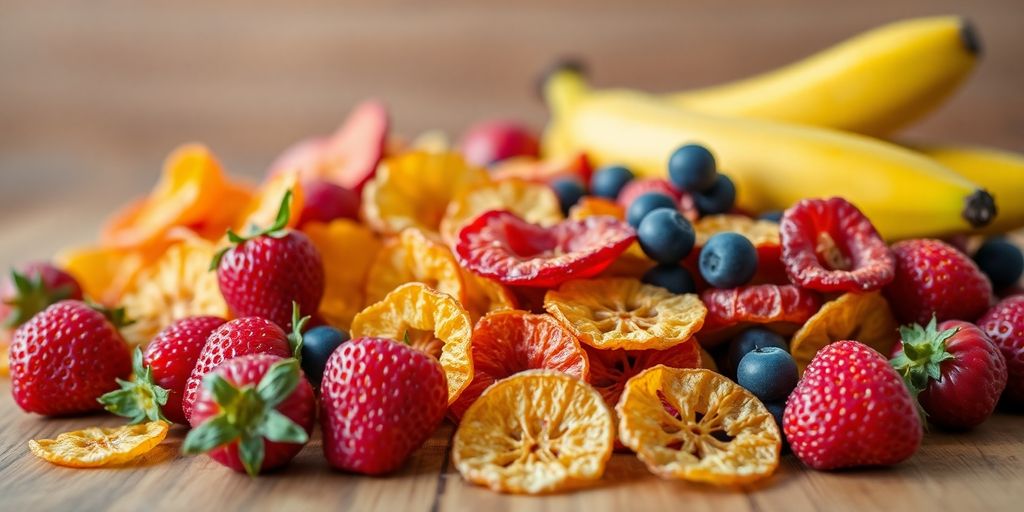
Definition of Freeze-Dried Fruits
Definition of Dehydrated Fruits
Dehydrated fruits, on the other hand, are processed using heat to remove moisture. Typically, this involves drying the fruit in an oven or using a dehydrator at temperatures around 145 to 200 degrees Fahrenheit. While this method is effective at preserving fruits, it often results in a chewier, leathery texture and can lead to some loss of flavor and nutrients. Dehydrated fruits are popular for their ease of preparation and are often used in homemade snacks and recipes.
Historical Context of Preservation Methods
The art of food preservation dates back to ancient times, with dehydration being one of the earliest methods used by civilizations to extend the shelf life of food. Freeze-drying, although more modern, was invented in the early 20th century and gained popularity during the 1950s. This method was initially developed for preserving biological samples but quickly found its way into the food industry due to its efficiency in retaining the nutritional content of food. Today, both methods serve important roles in reducing food waste and ensuring food security.
Freeze-dried fruit can be stored for nearly a decade, making it a less wasteful alternative for households looking to preserve food for long periods. In contrast, dehydrated fruits, while also extending shelf life, usually last about a year if stored properly.
eHerbal: Innovator in Freeze-Dried Technology
In Vietnam, eHerbal stands out as a leading manufacturer and exporter of bulk freeze-dried fruits. Utilizing advanced technology, they preserve up to 97% of nutrients while maintaining flavor and texture. Their GMP-certified facilities in Hanoi ensure rigorous quality assurance and safety inspections, making them a trusted choice for businesses seeking high-quality freeze-dried fruits. eHerbal is actively seeking partnerships with food and beverage companies and distributors to expand their reach and continue innovating in the field of food preservation.
The Science Behind Freeze Drying and Dehydration
Freeze Drying Process Explained
Freeze drying, also known as lyophilization, is a method that involves freezing the fruit and then reducing the pressure to allow the frozen water to sublimate. This process maintains the fruit’s structure and nutritional value, making it an ideal choice for preserving foods. Freeze-dried fruits, such as berries and apples, retain their original flavor and texture while being lightweight and easy to store. The result is a nutritious snack option that is both convenient and long-lasting. Freeze-dried fruit is particularly popular among health-conscious individuals.
Dehydration Process Explained
Dehydration, on the other hand, involves removing moisture from food using heat. This traditional method evaporates water, changing the food’s texture and density. Typically, dehydration leaves about 10-15% moisture content, resulting in foods that are chewier and denser. While dehydration is effective, it can sometimes alter the flavor profile of the food due to the heat used in the process. Dehydrated foods are often used for their long shelf life and convenience.
Technological Advances in Preservation
Both freeze drying and dehydration have seen significant technological advancements. Freeze drying technology, for example, has become more efficient, allowing for large-scale production without compromising nutritional value. This method is not only used in food preservation but also in pharmaceuticals, where maintaining the integrity of the product is crucial. Freeze drying offers a promising future in food preservation, contributing to the innovation of nutrient-rich and convenient food products.
As we continue to explore these preservation methods, companies like eHerbal are at the forefront, pioneering new techniques in freeze drying. Located in Vietnam, eHerbal is a manufacturer, innovator, and exporter, looking for partners in the food and beverage industry. Their commitment to quality and innovation ensures that they remain leaders in this field, offering sustainable and high-quality products.
Nutritional Differences Between Freeze-Dried and Dehydrated Fruits
Nutrient Retention in Freeze-Dried Fruits
Freeze-dried fruits are celebrated for their ability to retain most of their original nutrients. The process involves freezing the fruit and then removing the moisture through sublimation, which helps preserve vitamins and antioxidants. This method ensures that the fruits maintain their natural color, flavor, and nutritional profile, making them an excellent choice for health-conscious consumers. Compared to other preservation methods, freeze-dried fruits are lower in calories and retain more nutrients and minerals, enhancing their nutritional value significantly. As a result, they are considered a healthier option for snacks and meal additions.
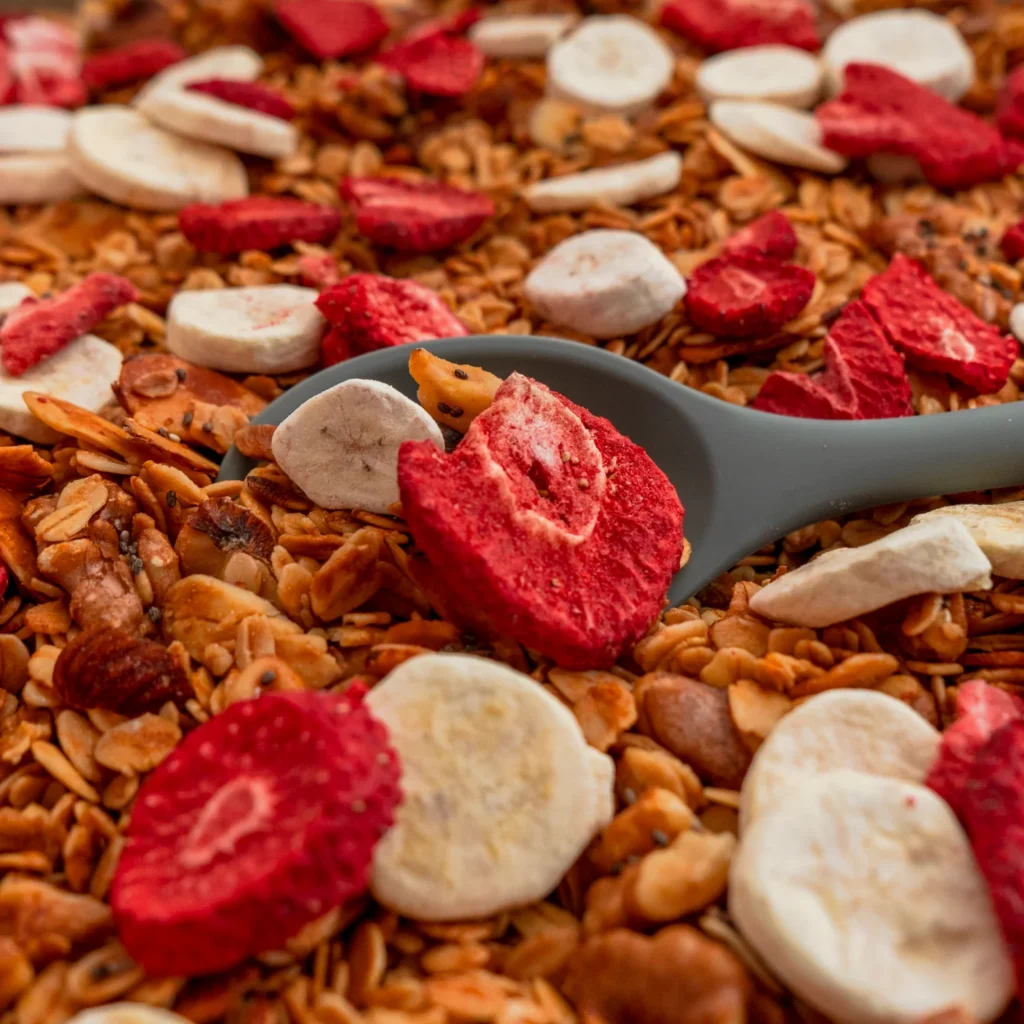
Nutrient Retention in Freeze-Dried Fruits
Nutrient Loss in Dehydrated Fruits
In contrast, dehydrated fruits undergo a process that involves applying heat to remove moisture, which can lead to the loss of some vitamins and minerals. This traditional method of drying typically results in a denser, chewier texture and a more concentrated flavor. While dehydration does preserve some nutrients, the heat can cause certain vitamins, like vitamin C, to degrade. Consequently, dehydrated fruits may not offer the same level of nutritional benefits as their freeze-dried counterparts.
Impact on Vitamins and Minerals
The impact of these preservation methods on vitamins and minerals is noteworthy. Freeze-drying is less aggressive, which means it better retains the fruit’s original vitamin and mineral content. This is particularly important for maintaining the levels of essential nutrients like vitamin C and potassium. On the other hand, the heat used in dehydration can diminish these nutrients, resulting in a product that might not meet the nutritional needs of individuals looking for a healthy snack option.
Freeze-dried fruits offer a convenient and nutritious way to enjoy your favorite fruits year-round. With their extended shelf life and preservation of essential nutrients, they are an ideal choice for those seeking a healthy, long-lasting snack.
eHerbal: Innovating Nutritional Preservation
Vietnam’s eHerbal stands out as a leading manufacturer and exporter in the freeze-dried fruit industry. With a commitment to quality and innovation, eHerbal is looking for partnerships with food and beverage companies and distributors. Their advanced production facilities and dedication to preserving the nutritional value of fruits make them an excellent partner for those interested in offering high-quality, nutritious products to consumers.
Texture and Flavor: A Comparative Analysis
Texture Variations in Preservation Methods
When it comes to texture, freeze-dried and dehydrated fruits offer distinct experiences. Freeze-dried fruit has a crispy texture due to the near-total removal of water. This process preserves the fruit’s original shape and gives it a light, airy feel. On the other hand, dehydrated fruit retains some moisture, resulting in a soft and chewy consistency. This difference is crucial for consumers who might prefer the crunch of freeze-dried fruits or the chewiness of dehydrated ones.
| Preservation Method | Texture | Moisture Content |
|---|---|---|
| Freeze-Dried | Crispy | 2-4% |
| Dehydrated | Chewy | 10-15% |
Flavor Profiles of Freeze-Dried Fruits
The freeze-drying process retains the original flavors of the fruit, offering a taste that’s close to fresh. This method uses low temperatures, which helps preserve the fruit’s natural sweetness and tartness. For instance, freeze-dried fruit like strawberries maintain their authentic flavor, making them a popular choice for snacks and toppings.
Flavor Profiles of Dehydrated Fruits
Dehydrated fruits, however, undergo a different transformation. The heat used in dehydration can concentrate and sometimes alter the fruit’s natural taste. As a result, dehydrated fruits often have a more intense flavor, which some people find appealing. They are an excellent option for those who enjoy a more robust taste in their snacks.
While both freeze-dried and dehydrated fruits offer unique textures and flavors, the choice between them often boils down to personal preference. Whether you crave the crunchy bite of freeze-dried or the chewy delight of dehydrated, each has its place in the world of preserved fruits.
Looking to the future, innovations in freeze-drying could revolutionize how we think about nutrients and food preservation. Companies like eHerbal in Vietnam are leading the way, offering freeze-dried products that maintain the integrity of their ingredients. As a manufacturer, innovator, and exporter, eHerbal is actively seeking partnerships with food and beverage companies and distributors to expand their reach and introduce these advanced preservation methods globally.
Shelf Life and Storage Considerations
Longevity of Freeze-Dried Fruits
Freeze-dried fruits are known for their impressive shelf life, often ranging from 15 to 30 years when stored properly. This longevity is primarily due to the thorough removal of moisture and the use of vacuum-sealed packaging, which significantly reduces the risk of spoilage. This makes freeze-dried fruits an excellent choice for long-term storage needs, such as emergency food supplies, or for those looking to minimize food waste.
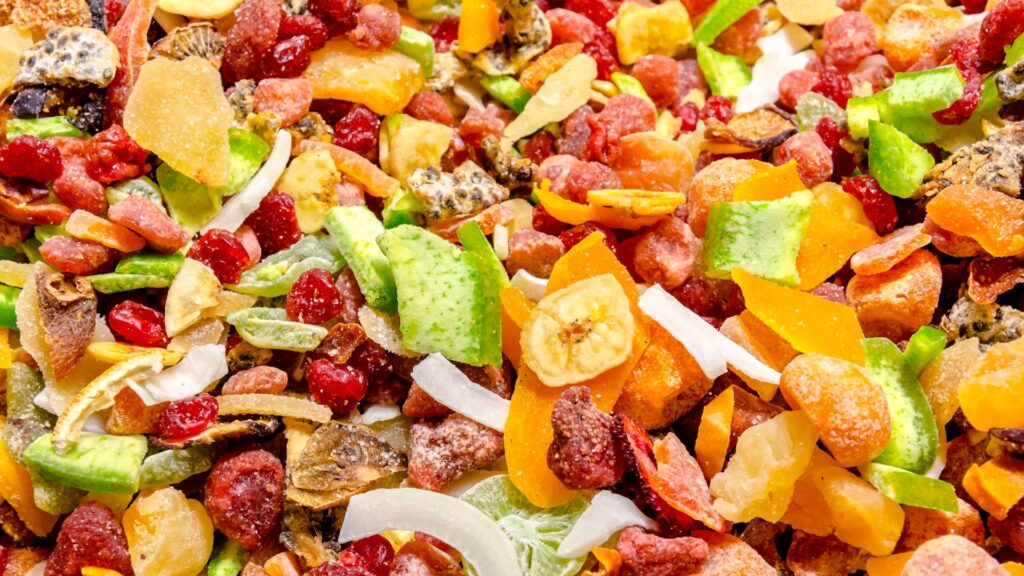
Freeze-dried fruits are known for their impressive shelf life
Storage Requirements for Dehydrated Fruits
Dehydrated fruits, while still boasting an extended shelf life compared to their fresh counterparts, typically last between 1 to 5 years. The higher moisture content in dehydrated fruits means they are more susceptible to microbial growth, necessitating careful storage conditions. It’s crucial to keep them in a cool, dry place, and sometimes refrigeration is recommended to maximize their longevity.
Impact of Moisture Content on Shelf Life
The moisture content in preserved fruits plays a critical role in their shelf life. Freeze-dried fruits, with nearly all moisture removed, are less prone to microbial growth and spoilage. In contrast, dehydrated fruits retain some moisture, which can lead to a shorter shelf life and require more vigilant storage practices to prevent spoilage.
Freeze-drying technology has revolutionized the way we think about food preservation. By removing almost all moisture, freeze-dried fruits maintain nutritional integrity and taste for decades, offering a sustainable solution to food storage challenges.
In the context of the freeze-dried food industry, manufacturers provide expiration dates to help consumers use these products within the optimal period. This ensures that the nutritional value and flavor are preserved as intended.
Economic and Environmental Implications
Cost Analysis of Preservation Methods
When it comes to choosing between freeze-dried and dehydrated fruits, the cost is often a significant factor. Freeze-drying is a more complex and energy-intensive process, involving stages like freezing, vacuuming, and sublimation. This complexity makes freeze-dried fruits generally more expensive per serving compared to their dehydrated counterparts. However, the benefits such as longer shelf life and better nutrient retention often justify the higher price for those prioritizing quality.
| Preservation Method | Average Cost per Serving | Nutritional Value | Shelf Life |
|---|---|---|---|
| Freeze-Dried | Higher | Better | 10-25 years |
| Dehydrated | Lower | Lower | 1-5 years |
Environmental Impact of Freeze Drying
The environmental footprint of freeze-drying is notable due to its energy requirements. However, advancements in technology are helping to make the process more sustainable. Companies like eHerbal in Vietnam are pioneering eco-friendly practices by using state-of-the-art freeze-drying technology that conserves resources and reduces waste. Their commitment to green manufacturing demonstrates that even energy-intensive processes can evolve towards sustainability.
Sustainability of Dehydration
Dehydration, on the other hand, tends to be less energy-intensive and more accessible. It involves simpler machinery and processes, making it a more environmentally friendly option. This method supports sustainable practices by using less energy and being more adaptable for small-scale producers. As a result, dehydrated fruits are not only cost-effective but also align well with eco-conscious consumer preferences.
As we look to the future, innovative companies like eHerbal are setting the standard for sustainable food production. They are not just preserving fruits; they are preserving the planet by integrating eco-friendly technologies and supporting local communities. Their efforts highlight the potential for freeze-dried products to innovate the future of food and nutrients, offering both economic and environmental benefits.
In summary, while freeze-drying may come with a higher price tag, its benefits in nutrient retention and long shelf life make it a worthy investment for many. Meanwhile, dehydration remains a budget-friendly and eco-friendly option, making it a popular choice among different consumer segments. Both methods have their unique advantages, and the choice often depends on individual priorities and values.
Practical Applications and Consumer Preferences
Uses in Culinary Practices
Freeze-dried and dehydrated fruits have carved out unique niches in the culinary world. Freeze-dried fruits, with their light weight and ease of rehydration, are perfect for creating vibrant fruit powders, intense flavor garnishes, and even as a crunchy topping for desserts. They’re a favorite among chefs who want to add a burst of flavor without extra moisture. On the other hand, dehydrated fruits like banana chips or dried apricots are popular for adding texture and chewiness to dishes, such as soups and sauces. Both forms of dried fruits have their place in kitchens around the world, offering versatility and convenience.
Consumer Trends in Fruit Preservation
In recent years, there’s been a noticeable shift in consumer preferences towards healthier snack options, and both freeze-dried and dehydrated fruits fit the bill. Freeze-dried fruits, in particular, are gaining popularity due to their ability to retain most of the original nutrients and flavors. This trend is driven by a growing awareness of nutrition and the desire for convenient, portable snacks that do not compromise on health benefits. Dehydrated fruits remain a staple for those who appreciate their chewy texture and intense flavors. Consumers today are more informed and selective, often choosing products that align with their lifestyle and health goals.
Market Availability and Accessibility
The market for dried fruits is expanding, with both freeze-dried and dehydrated options readily available in supermarkets and specialty stores. Freeze-dried fruits are often viewed as premium products due to their complex production process, which keeps them at a higher price point. However, their long shelf life and nutritional benefits make them a worthy investment for many consumers. Dehydrated fruits, being more affordable, are accessible to a wider audience and are a common choice for budget-conscious shoppers. As the market grows, manufacturers like eHerbal, a leading innovator and exporter in Vietnam, are looking for partners in the food and beverage industry to expand their reach. eHerbal’s commitment to quality and sustainability makes them an ideal partner for companies and distributors seeking to offer high-quality, nutritious products to their customers.
Understanding the differences between different drying methods for small fruits and vegetables is essential for both consumers and producers. As the industry evolves, staying informed about these methods can help make better choices in product development and personal consumption.
In today’s world, people are looking for tasty and healthy food options. Freeze-dried fruits and vegetables are becoming popular because they keep their nutrients and flavor. Many consumers prefer these products for their convenience and long shelf life. If you’re curious about how these products can fit into your lifestyle, visit our website to learn more and explore our offerings!
Conclusion
In conclusion, freeze-dried and dehydrated fruits offer unique benefits and serve different purposes. Freeze-drying preserves the fruit’s original flavor, texture, and nutritional content, making it a great option for those who want a long-lasting, lightweight snack. On the other hand, dehydrated fruits are more cost-effective and provide a chewy texture that some people prefer. Understanding these differences can help you choose the right type of preserved fruit for your needs, whether you’re looking for a healthy snack or a convenient ingredient for your recipes. Both methods have their place in the world of food preservation, and your choice will depend on your personal preferences and requirements.
Read more: Is Freeze Dried Fruit Crunchy? Exploring the Texture and Taste of Freeze Dried Snacks
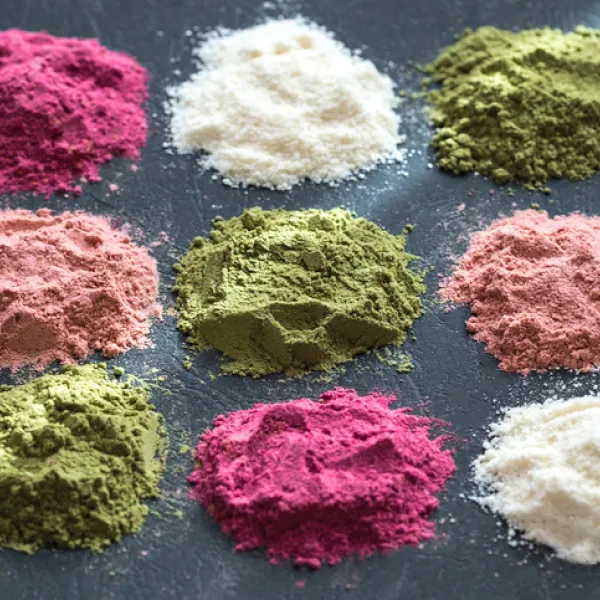
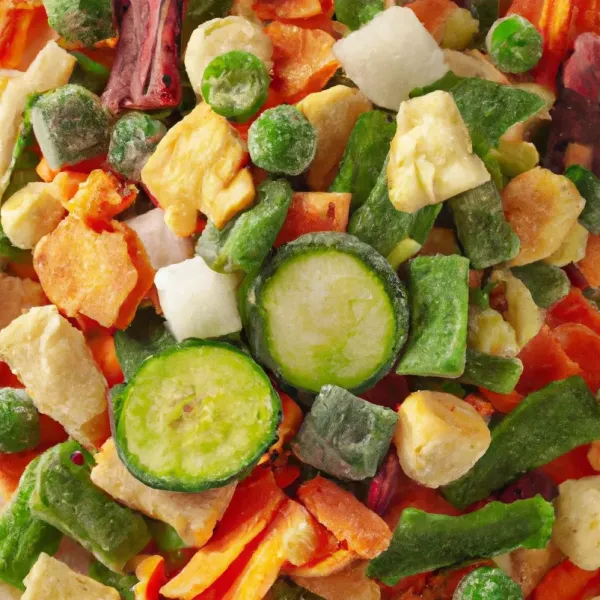
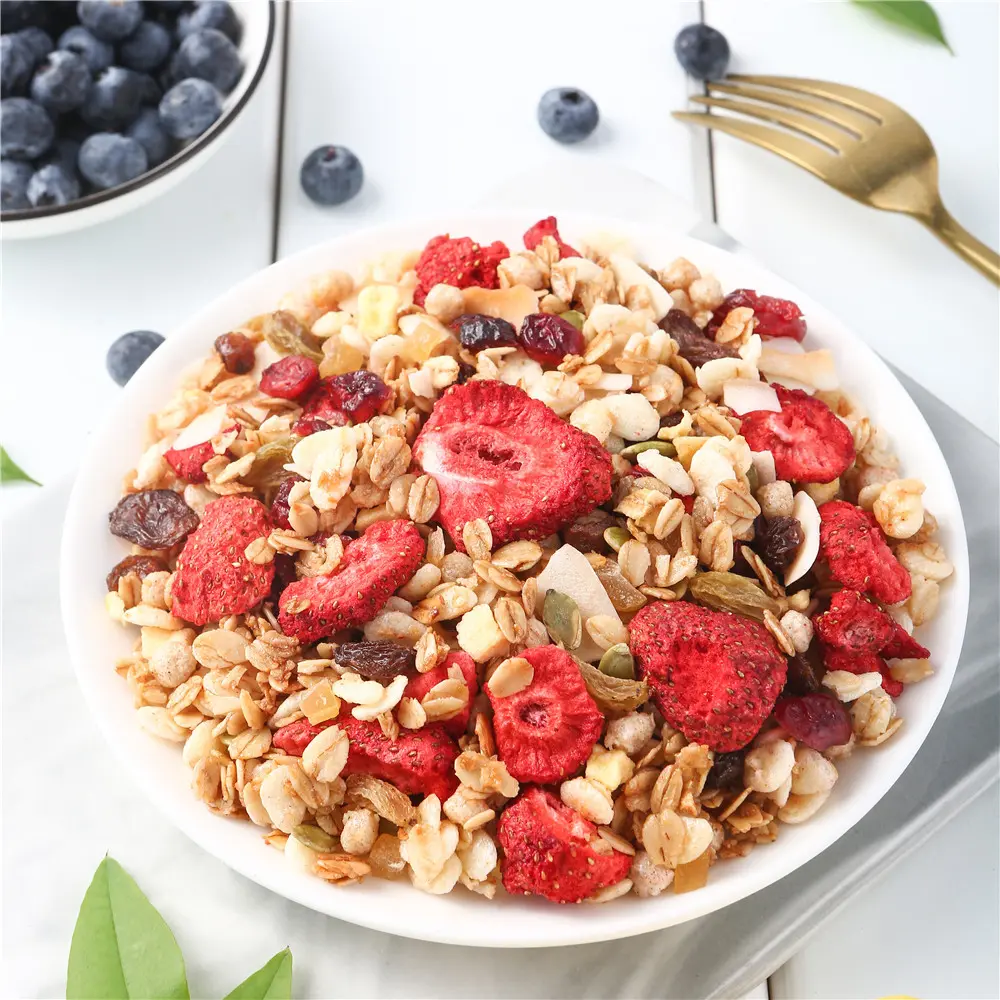
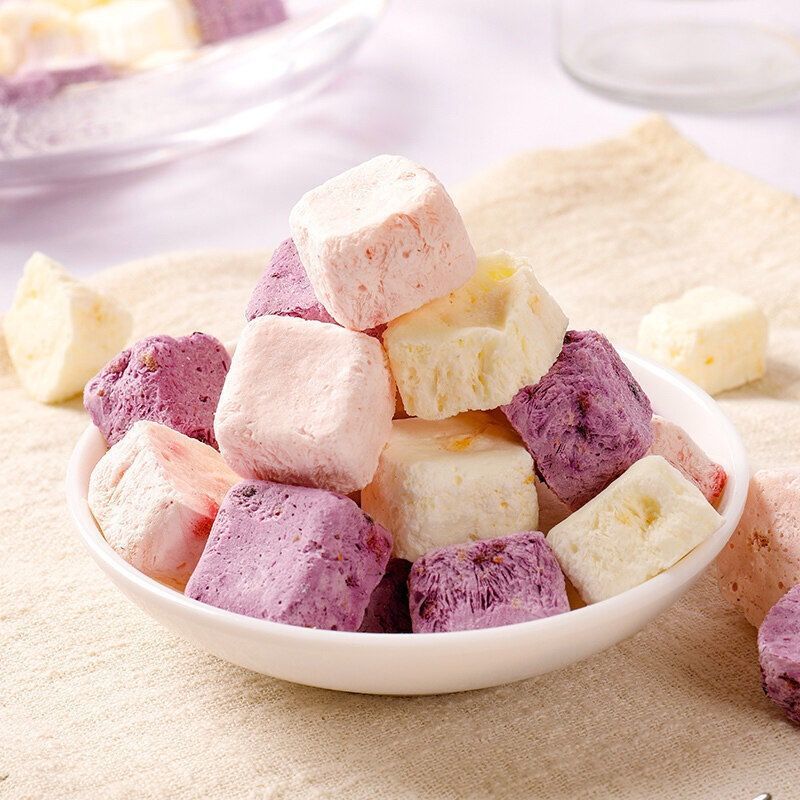
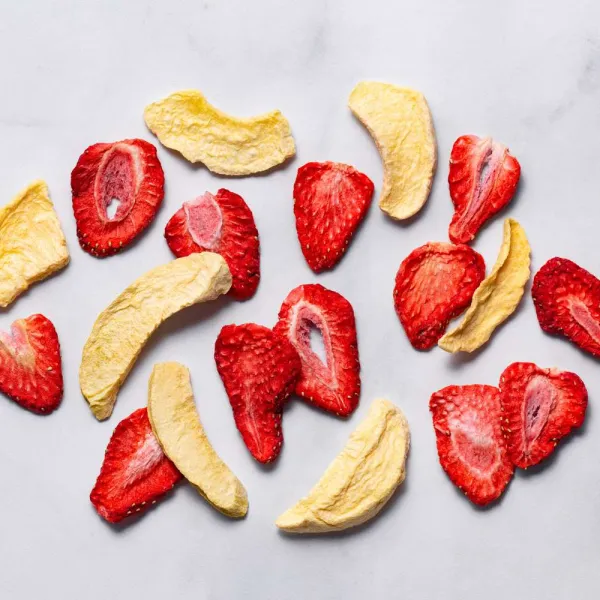
You may also be interested in
Are Freeze Dried Strawberries Keto-Friendly? A Comprehensive Guide
Read more...May
Are Freeze Dried Fruits Nutritious? Unpacking Their Health Benefits and Nutritional Value
Read more...Apr
Where to Find Freeze Dried Fruit Wholesale: What Aisle is Freeze Dried Fruit In?
Read more...Apr
Is Freeze Dried Fruit Better Than Dehydrated? Exploring the Differences and Benefits
Read more...Apr
Is Freeze Dried Fruit Good for Weight Loss? Discover the Surprising Benefits!
Read more...Apr
How Long Will Freeze Dried Fruit Last? Understanding Shelf Life and Storage Tips
Read more...Mar